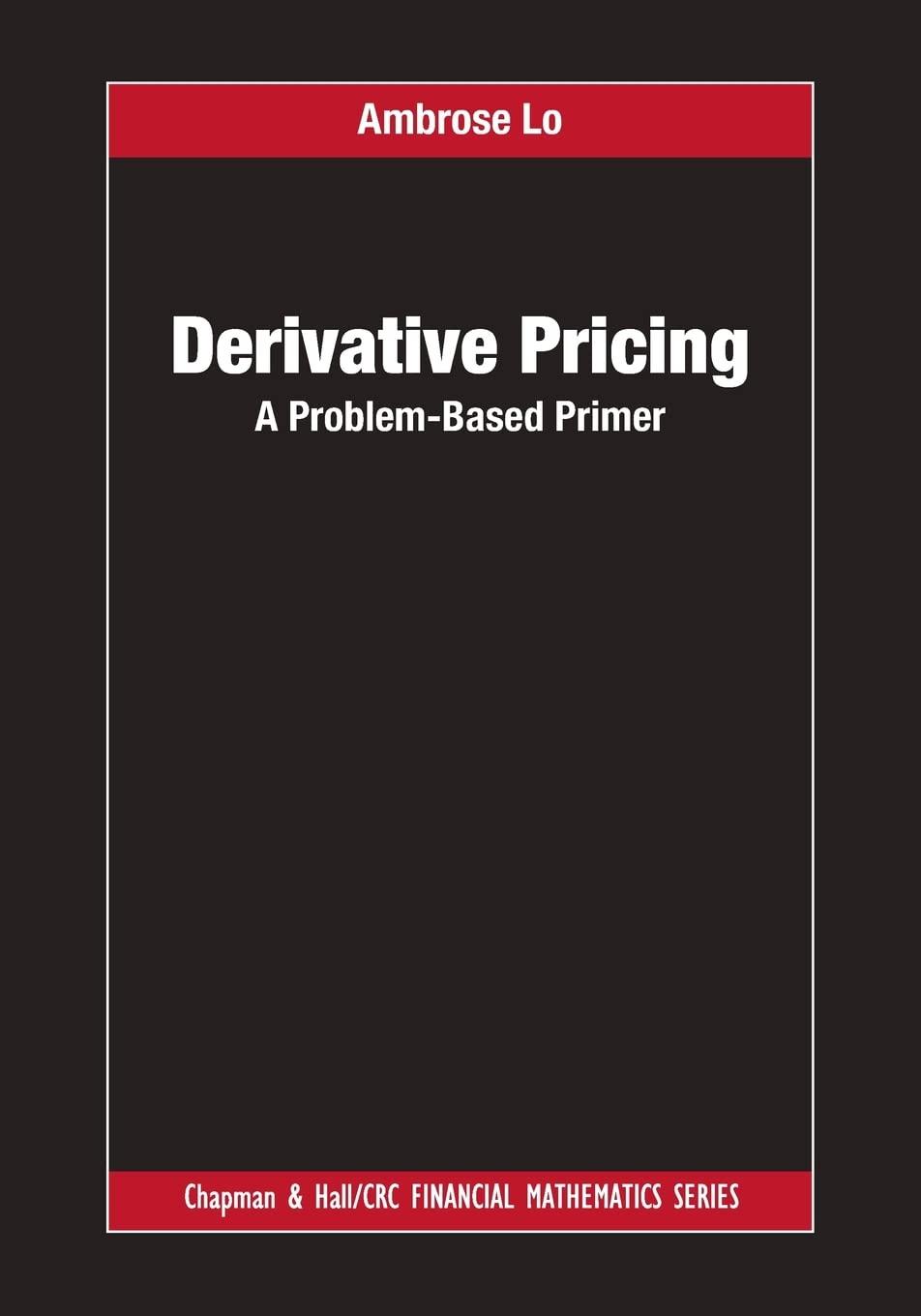Answered step by step
Verified Expert Solution
Question
1 Approved Answer
The current price of stock ABC is $80. A one-year call option with strike price $82 on this stock sells at $8.9. The risk free
The current price of stock ABC is $80. A one-year call option with strike price $82 on this stock sells at $8.9. The risk free rate is 5%.
(1) Suppose put-call parity holds, calculate the price of a one-year put option with strike price $82.
(2) An investor wants to use one-period binominal tree to value this call option. He assumes the stock price can either increase in value by 20% or decrease in value by 20%. Calculate the price of this call option based on this binominal model.
(3) This investor also wants to use one-period binominal tree to value this put option. He assumes the stock price can either increase in value by 20% or decrease in value by 20%. Calculate the price of this put option based on this binominal model. (4 marks)
(4) Does the price of call and put option calculated in (3) and (4) satisfy the put-call parity relationship?
(5) Suppose that the current market price of a one-year put option with strike price $82 is $8. Is there an arbitrage opportunity? Please justify your answer. If there is an arbitrage opportunity, how to construct a trading strategy to take advantage of this arbitrage opportunity? (5 marks)
(6) Tom is a financial advisor. He believes that the one-period binominal model is not accurate. He wants to use a two-period binominal model to estimate the value of one-year call option. He split the one-year into two periods evenly. He assumes the stock price can either increase in value by 20% or decrease in value by 20% in each period. Calculate the price of this call option based on this binominal model.
(7) Suppose the risk free rate increases from 5% to 6%. How does this change affect the call and put option prices? Please justify your argument.
(8) Suppose that the stock price suddenly becomes to be more volatile. How does this change affect the call and put option prices?
(1) Suppose put-call parity holds, calculate the price of a one-year put option with strike price $82.
(2) An investor wants to use one-period binominal tree to value this call option. He assumes the stock price can either increase in value by 20% or decrease in value by 20%. Calculate the price of this call option based on this binominal model.
(3) This investor also wants to use one-period binominal tree to value this put option. He assumes the stock price can either increase in value by 20% or decrease in value by 20%. Calculate the price of this put option based on this binominal model. (4 marks)
(4) Does the price of call and put option calculated in (3) and (4) satisfy the put-call parity relationship?
(5) Suppose that the current market price of a one-year put option with strike price $82 is $8. Is there an arbitrage opportunity? Please justify your answer. If there is an arbitrage opportunity, how to construct a trading strategy to take advantage of this arbitrage opportunity? (5 marks)
(6) Tom is a financial advisor. He believes that the one-period binominal model is not accurate. He wants to use a two-period binominal model to estimate the value of one-year call option. He split the one-year into two periods evenly. He assumes the stock price can either increase in value by 20% or decrease in value by 20% in each period. Calculate the price of this call option based on this binominal model.
(7) Suppose the risk free rate increases from 5% to 6%. How does this change affect the call and put option prices? Please justify your argument.
(8) Suppose that the stock price suddenly becomes to be more volatile. How does this change affect the call and put option prices?
Step by Step Solution
There are 3 Steps involved in it
Step: 1
Lets tackle each question step by step 1 To calculate the put option price using putcall parity its ...
Get Instant Access to Expert-Tailored Solutions
See step-by-step solutions with expert insights and AI powered tools for academic success
Step: 2

Step: 3

Ace Your Homework with AI
Get the answers you need in no time with our AI-driven, step-by-step assistance
Get Started


